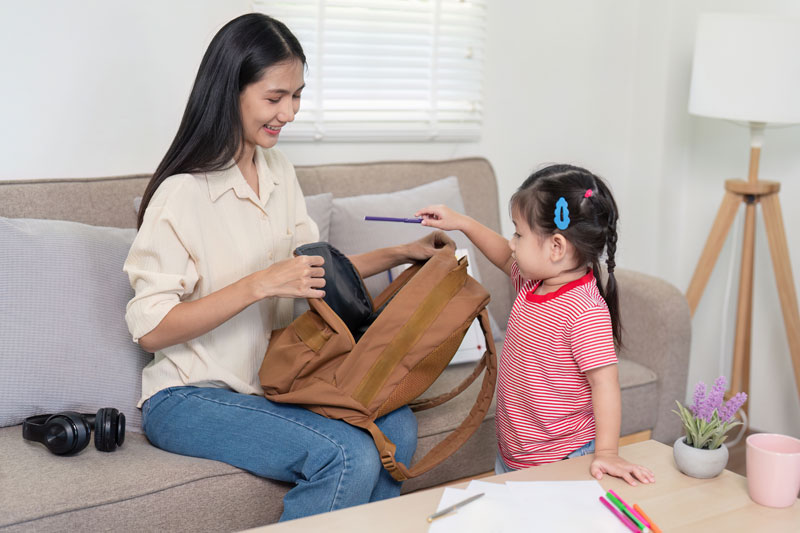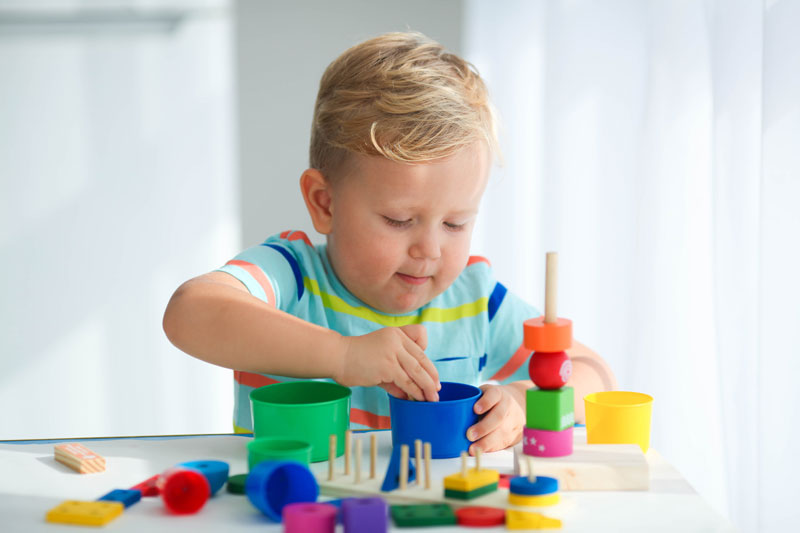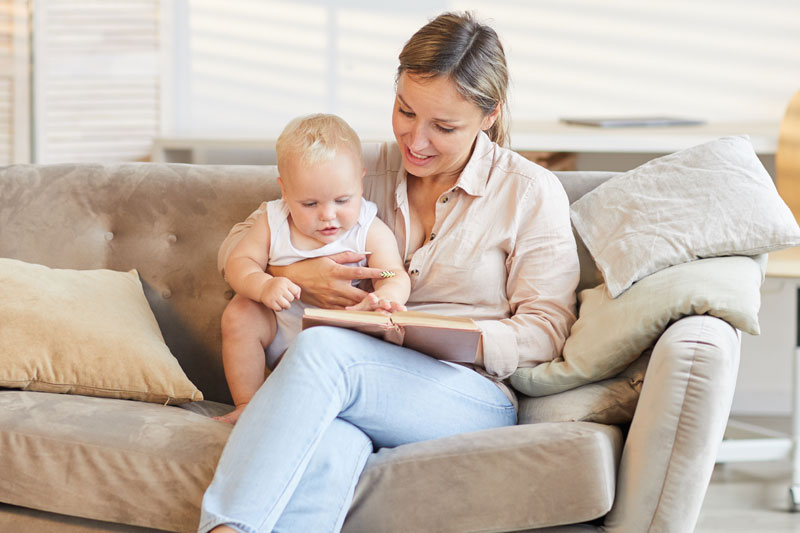Tips for Preparing a Montessori Play Area in Living Room
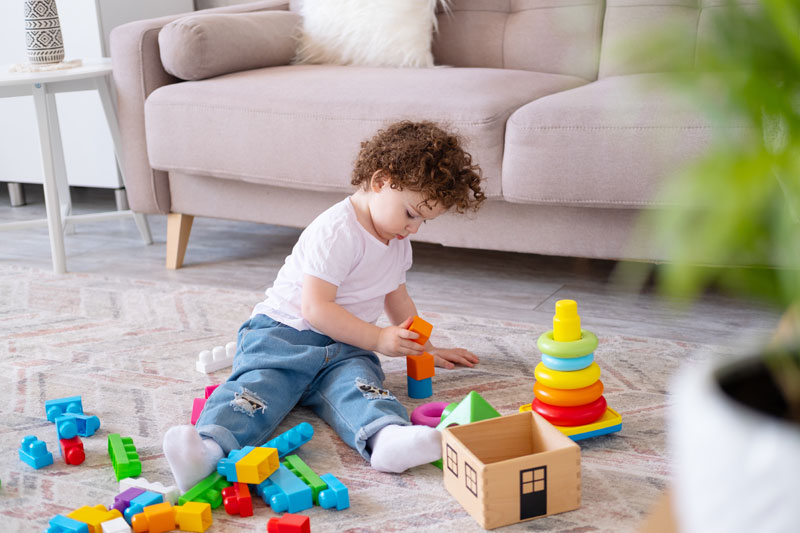
Playing is not only about having fun for toddlers. This is the time when they start building their lifelong skills. Montessori play helps toddlers’ development by transforming everyday play sessions into purposeful learning experiences.
You can introduce this educational philosophy right at home by preparing a Montessori play area in living room. By creating this space, you will have a hub for independence, exploration, and joyful learning within your daily family routine.
What Is Montessori Play and Why Does It Matter?
Montessori is a meaningful and self-directed activity that fosters various skills, including independence, confidence, cognitive development, and emotional intelligence. Through sensorial and practical activities, toddlers will develop creativity, problem-solving, and social skills, which are essential for their future lives.
Montessori toys are not flashy or passive, unlike traditional toys. They are quiet and intentional, designed to help children become active participants in their growth. The toys vary from pouring water to stacking blocks and sorting objects. These simple tasks support language development, motor skills, and creativity.
If you’re also navigating challenges like tantrums or picky eating habits, integrating Montessori methods into your routine may offer more calm and structure.
Setting Up a Montessori Play Area in the Living Room
Setting up a playroom does not require a big space or expensive materials. You can create a simple yet intentional Montessori play area in living room. The key is to keep it intentional, calm, and not cluttered. These are 4 steps you can follow to create a calm and educational playroom for your toddler.
1. How to Arrange the Play Room
Start with creating a child-sized environment with accessible storage for a toddler. For example, you can choose low, open shelves to neatly organize toys. This way, your child can see the available toys and what they want to play with. This will also encourage independence because it is easier to clean up.
Ensure the space is arranged according to the types of play that will be conducted. For example, sensory, practical life, or creative arts. Keep the floor space open and safe for movement and exploration. Use soft colors and natural light to induce a peaceful atmosphere. If you’re also working on kindergarten readiness, this arrangement supports focused learning at home.
2. Selecting the Right Toys
Montessori toys are simple, open-ended, and purposeful. These types of toys encourage hands-on learning and skill building, such as puzzles, simple toys for pouring and sorting, or stacking blocks.
Good Montessori toys are crafted from natural materials and feature simple, clean designs. Choose toys made from wood, metal, or fabric rather than plastic. Choose toys that help develop fine and gross motor skills, sensorial learning, and problem-solving. Avoid electronic or noisy toys, as these types can overwhelm children.
3. Example of Montessori-Friendly Toys
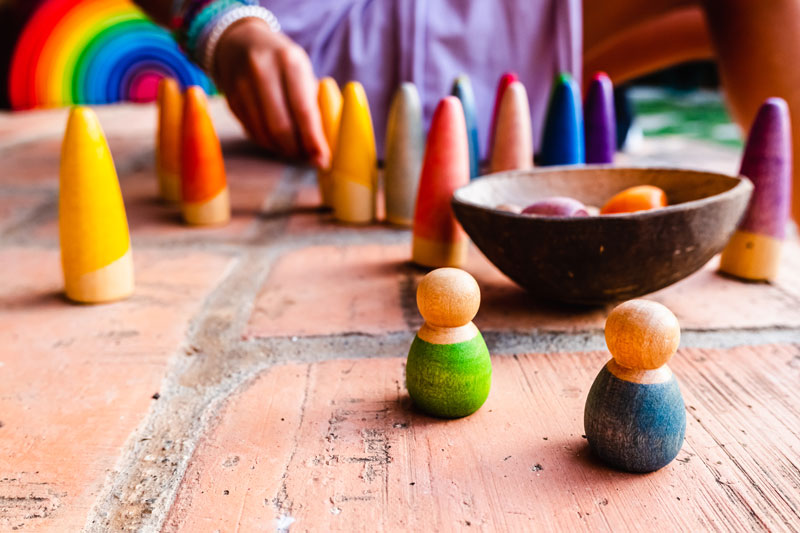
Based on point 2 above, you should already have an idea of what types of toys can be considered Montessori toys. These are some examples of toys that are perfect for your Montessori play area in living room:
- Wooden stacking rings
- Practical life tools such as small brooms or watering cans
- Bead threading toys
- Simple puzzles with knob handles
- Natural play-dough or clay
- Simple pouring or transferring items such as spoons and small containers
- Sensory balls or fabric baskets
4. Involving Your Children in Choosing and Cleaning Their Toys”
Setting up a Montessori play area in living room does not mean setting up everything for the children. Instead, it is about doing things with them, including choosing and caring for the toys. Encourage your children to choose the toys they want to play with from the shelf. This will train decision-making skills and foster interest in their play activities.
When playtime is over, teach them to clean up as part of the routine. To make it easier and less overwhelming, you can implement a rule of one toy out at a time, and put it back before choosing another. By doing this, your child will become accustomed to cleaning up their toys and prevent the playroom from becoming cluttered with toys.
A Montessori play area in living room is not just about aesthetics. It is about building habits of focus, independence, and joy in learning. A calm and purposeful environment helps your children focus while playing. Because sometimes, a small, thoughtful space can go a long way in shaping the development of your children.
Have you tried setting up a Montessori play area at home? Share your experience in the comments, and don’t forget to share this article with a fellow parent who might also appreciate it!

